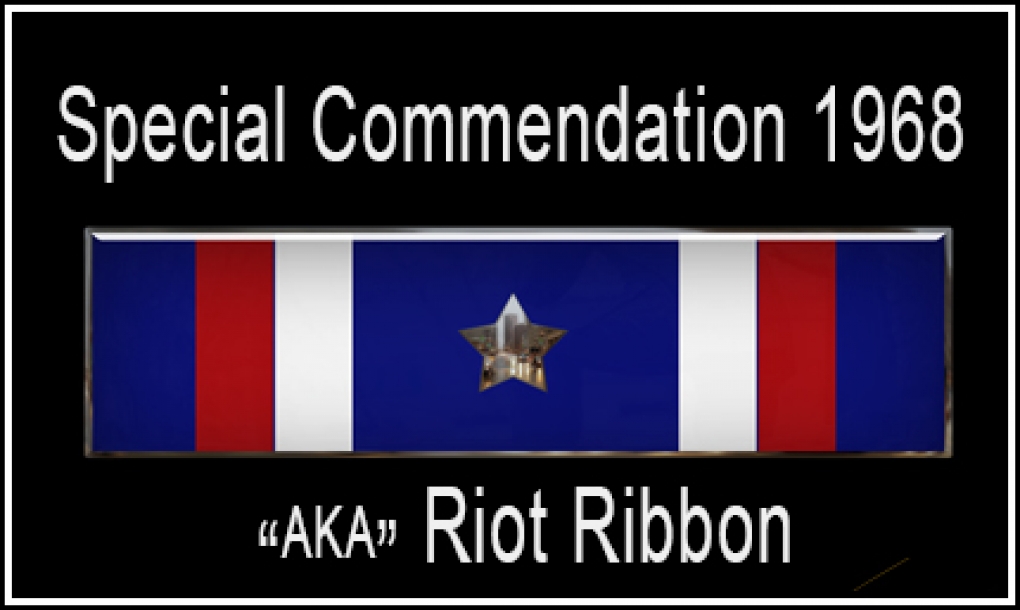
Only sworn member of the department on duty in the City of Baltimore during the period of civil unrest, 5 April through 14 April 1968, were eligible for this award.

Only sworn member of the department on duty in the City of Baltimore during the period of civil unrest, 5 April through 14 April 1968, were eligible for this award.


21 July 1909
To Keep Tabs on Pawnshops
Col. Swann Once Law Regarding Daily Reports of Deals
To help the police keep tabs on secondhand dealers and pawnbrokers who by stolen goods, Col. Sherlock Swann, President of the Board of Police Commissioners, will have introduced into the next Legislature a bill compelling Three-Ball Experts to make daily reports to the police Headquarters their purchases of valuables. Laws like this are in existence in nearly every other city.
“It is very important,” said Col. Swann yesterday, “that we have such a law in Baltimore. I do not say this simply because other cities have it, but only because it is necessary to keep tabs on stolen articles.
"I hope that when the bill is introduced at the coming Legislature it will pass, for it will be of great help to our department. Such a law affords the police the opportunity to recover the stolen property if the thieves are not caught. “Marshall Farnan warmly approved of the idea. "It's a necessity," said the Marshal. "To do good work we have to be able to date, and we should, by all means, have a system of knowing what jewelry is bought by secondhand dealers and pawnbrokers."
![]()
Anyone with information, photographs, memorabilia, or other "Baltimore City Police" items can contact Ret. Det. Kenny Driscoll at
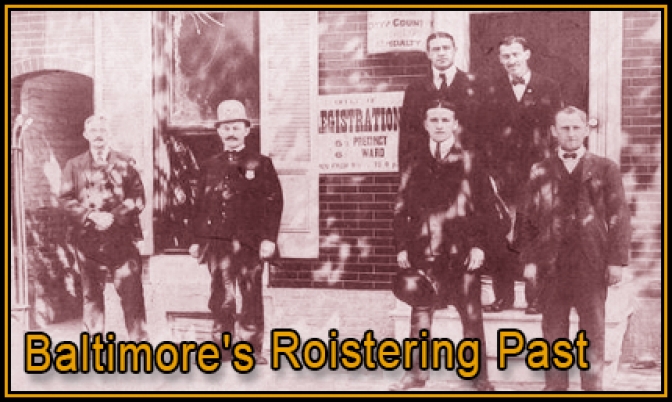
Baltimore Has a Roistering Past
Once Known as the Wickedest City in the Country
16 September 1928
2 o’clock and all's well – all's well and Cornwallis is taken!
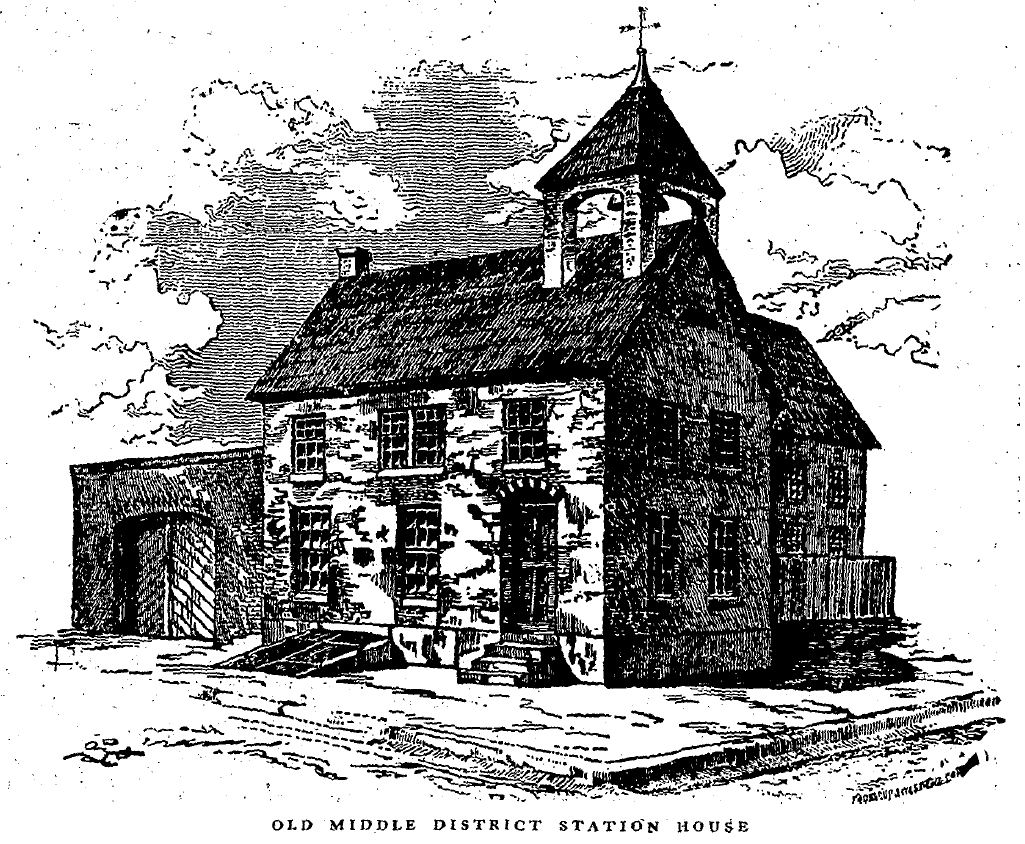
Long ago with a narrow dirt streets of Baltimore Town the night watch, calling the hours, notified the sleeping populates that the 13 colonies had it last achieved in the freedom for which they had struggled so long.
With the birth of the new nation was born the Baltimore Police Department and organizations which had changed with the times, but which has survived in the growing pains of the early 19th century, the era when Baltimore was known as the wickedest city in the country, the Civil War riots and the railroad strikes, until the present day witnessed a police force of 16,000 men under Commissioner Gaither.
In 1775, when open hostility against the motherland was coming to a head a volunteer organization to guard the city from male factors which established, on which every adult male inhibited capable of performing the duties of watchmen was required to serve a specific time
Shortly after Cornwallis surrendered came the first paid night watchman, as Street lamps, an in event innovation in Baltimore town, were introduced in the community. The new illumination greatly reduce the crime and the thriving town and made the task of the Constable much easier. Anything favorable must’ve been appreciated, two, four in those days a watchmen was paid 3 pounds a month, unless $15
The familiar cries of 10 o’clock and all was well, - 5 o’clock and a rainy morning, continued without variation through the days and nights when the town was growing into a city, through the years of struggle and Barbary pirates, English men of war and French privateers, until 1843, when the monotonous calls were stilled forever. In that year the custom of calling the hours was abolished when taxpayers convinced city authorities that the loud cries sole value was to thieves, burgers and rogues, who were thereby notified of the whereabouts of the Constable and so enabled to commit their crimes elsewhere with impunity.
10 years later came the first large reorganization of the department. The pay of the marshal of the police was established at $1500 a year, a Capt. receives $13 a week and a patrolman $10 a week. In those days patrol wagons were undreamed of luxuries, and the police were forced to walk their prisoners to the station houses. In many cases officers had to carry drunken or injured persons on their shoulders or requisition passing vehicles.
On one occasion a patrolman in the Southwest district with an unconscious DRUNK on his hands hailed the driver of a passing hearse and deposited his charge in the vehicle of death. Mounting the box beside the driver the patrolman started the hearse on its way to the station house. The old narrative goes on, “All went well until the drunk, awakened by the jolting, set up opened his eyes, saw what kind of equipage he was riding in, and with a yell of terror plunged through the glass sides to the street, and sobered by his unusual experience, started to run!
In 1857 Baltimore, flooded like other cities with the “Know Nothing” ideas, became known as Mob Town. In this year almost 9000 arrests were made by the small police force of that day. Fights and riots were well of common occurrence and a fire was chiefly an excuse for starting a battle. Volunteer Fire Companies answered the alarm, instead of uniting with their efforts to check the blaze, would resent rival efforts and serious fights became the companies often resulted. In place of establishing fire lines, holding back the crowds and regulating traffic at the scene of the fire as the police do today, the patrolman of the 1850s were called upon to pacify the bickering fireman or to club them into insensibility and fight the fire themselves.
Corruption and graft were right, gangs ran unchecked, and the police were handicapped in their efforts by indulging and tainted magistrates, the release prisoners on “Straw Bail” almost as fast as they were locked up. One man was arrested 147 times by a Capt. Daniel Western district and was invariably released when he came up for hearing.
With the approach of the Civil War, days the populace became more and more unruly, gangs of youths below military age abounded in East Baltimore, police of that day were hats with large plumes, dark blue single breasted coats was standing collars, and dark blue trousers.
The youth of that day took exception to this uniform, the first ever warn by Baltimore police, they greeted the officers with the following doggerel:
We like Turkeys
We like Geese
But we don’t like
The New Police
With Lincoln’s election came the secession of the South Carolina, the formation of the Confederate states of America and a practical dismemberment of the Union. Buchanan compromised and pleaded, but took no decisive steps to avert the threat of chaos. Maryland like other border States knew not where to turn. Although her sympathies were largely Southern and or tendencies were toward secession, especially after Virginia left the Union, there were enough Unionist in the state to sway public opinion like a bubble wafted a fickle breeze.
In Baltimore minor clashes between northern and southern sympathizers were frequent, but as affairs came to a crisis the city leaned more and more toward the south. On April 19, 1861, when human passions had been supremely stirred by the events of the past few months and the city was seething and rest list, about 2000 troops from Massachusetts and Pennsylvania and route the Washington DC attempted to march through the streets of town getting from one railroad to another
The Baltimore Police Department have been formed of the troop’s movement and the force, under Marshal Kane, had made special preparations to avert riots. The troops were did disembark from their 35 cars at the Old Pres. Street station and were to be transported to Camden Station by force cars. The first nine carloads made the trip through the narrow, mob crowded, cobblestone streets and arrived safely at their destination, with a re-embarked for Washington under the watchful eyes of the police.
The crowd however gained courage with numbers and at last a few leading spirits inflamed the mob to action. The horse cars were one from the sales and demolished the crowd, working furiously with crowbars and sledgehammers, pride up the rails and destroyed the tracks. The small police force was powerless to stop the riders, but when it was decided to march the remainder of the troops through the city, a police guard under Marshal Kane, and Mayor Brown and the police Commissioner was formed to protect the van’s flank and rear.
Leading Pres. Street station the March through the shouting, hooting, milling mobs to Camden Station was begun. Almost at once the crowd began to demonstrate, pressing against the police guard and hurling stones and bricks at the soldiers. Several policemen were struck by flying missiles. Although they were not seriously injured. At President and Fawn streets, two soldiers were knocked down by stones and so severely hurt that they died afterward, and several citizens were shot. The Massachusetts troops retaliated by firing into the crowd. The troops, escorted by the police, finally reached Camden station these tumultuous days continued throughout the Civil War.
Just after the city had run the gauntlet of war, it was visited in 1868 by a devastating flood which inundated all of the lower section of the town and turn streets in the rivers houses were flooded to their second-story windows and the swift rushing water threatened destruction to many blocks of dwellings. Policemen were turned overnight in the sailors an entire force, under the direction of Commissioner James E Carr, devoted itself to rescue and relief work. Both were secured and many persons were rescued from death in the swirling currents.
Commissioner car himself narrowly escaped drowning when he fell overboard from a small boat while attempting to rescue a Negro in the second floor of a house was swept from the site of his companions by the time and was reported drowned. His death was actually published in several Baltimore papers, but almost an hour after his fall into the waters, the Commissioner, still afloat, was cited by a group of men on the corner of Fayette and Harrison streets. He was almost exhausted, but was still struggling with the waves.
One of the men says an old account recognizing the Commissioner made him the odd Fellows sign of distress and China rope around his wrists swam out into the stream while the other end of the line was held by friends the Commissioner was ill for some weeks.
In the early 1870s Negro militia companies were founded companies which had no official status, but which nevertheless paraded, uniformed and armed. Through the streets the town some of the marchers became so arrogant at this order resulting in several persons being shot and killed. The police, after troublous times, finally managed to put an end to these organizations, but no sooner were they out of the way than the unhappy officers of the law were greeted with gang wars. The Game Cocks at Thames and Bond streets, the Double Pumps at bond and Lancaster, the Canton Rackers, the Found Knockers, the Skinners, the Stay-lates, and the Fountain Rackers, all caused trouble. The martial spirit of Civil War days pervaded the city, and these gangs bought up a large quantity of drums and arranged nightly parades.
Battles quickly followed with stones and clubs at first the only weapons, as in the old days, but finally the Skinners arm themselves with the old powder pistols of the day, making of the 70s a turbulent Period.
In 1877 came the great Baltimore and Ohio Railroad strike which lasted almost a month and door in which scores were killed and hundreds wounded.
The strike started and Cumberland Maryland and when the old six Regiment, Maryland National Guard, was order to embark for Cumberland, a crowd of strike sympathizers gathered about the armory of the Regiment at Fayette and front streets. Officers of the Regiment ask for police protection, but the mob was so great, that the few policeman available at such short notice were unable to disperse the crowd. When the troops marched from the armory, the yelling thousands pressed upon the soldiers, greeting them with taunts and curses. One away could not be cleared for the March to Camden Station and order was given to fire in the air.
This had no effect upon the mob, which was now ready for violence, and the men were ordered to fire into the crowd. The firing was general all along the way to Camden Station, the 12 men were killed and scores wounded. The fifth Regiment reached the station without firing a shot, but one barking the crowd set fire to the station and when the firemen arrived to quench the blaze they were set upon by the rioters and would have been driven off that the police had not opportunely rescued them. While the soldiers were waiting to embark, the police frequently charged to the mob, using their Espantoons, to drive back that hooting thousands.
The situation became worse and worse, and finally a detachment of men under the command of Deputy Marshal Jacob Fray, who was guarding the station, were forced to draw their revolvers and fired into the crowd. Some eight men were killed and a large number wounded, and about 50 arrest were made.
The situation finally passed beyond police control, although several hundred special officers were sworn in, including such well-known then as C Morton Stewart, Alexander M Green, William M Pegram, and E Wyatt Blanchard. All the local militia were called out, but was unable to cope with the moms. United States regulars from New York and other points were sent to the city and to war vessels with decks cleared and ready for action anchored at the Patapsco. Patrolling the narrow cobblestone gas lit streets was no easy task in those days. Many vicious characters roam the streets and some showed little respect or fear for the law or its representatives.
One night as Sgt., while patrolling a narrow, backstreet, that a gigantic deaf and dumb Negro, who was who was wanted for an assault.
The Sgt. placed the Negro under arrest and attempted to take him to the station house, but the giant black man held both the Sergeant’s arms and pick the policeman up, threw him over his shoulder like a sack of meal, and carried him up three flights of stairs in a house in the neighborhood. They are, in the attic, the Sgt. recognized three other Negroes of desperate character, and he realized that his life was in great danger.
He told the three Negroes that if they did not help him to arrest the deaf and dumb giant he would hound them forever, if he got away alive. The three scoundrels were frightened and taking sides with the Sergeant, the four men attempted to overpower the giant. Struggling, fighting, clawing with the giant Negro uttering the weirdest cries of the Dom, the five men stumbled, fell and rolled down the steps of the house to the sidewalk, where the policeman beat his ass band tune on to the pavement for help. Eight policemen were required before the Negro finally was subdued.
In 1883 the days of walking prisoners to police stations came to an end with the first police patrol came into being. It was patterned after the wagons used in Chicago and was described as a model of convenience. According to the old account of its advantages, it can binds lightness with strength, is conspicuous by its blackbody and bright red running gear and is tastefully marked and numbered. The first police patrol was a thing of never ceasing joy to the urchins of the city, and crowds would stare after it as it rattled down the rough streets.
To be Baltimore patrolman in the 1880s and 1890s one needed not only brains and brawn. And inmate ability to grow braggadocio mustachios or long flowing beard was almost a necessity. Policemen with faces hidden behind a mass of whiskers were the rule, not the exception. A patrolman of those days, now a Lieut. in the Northwestern district said that when he joined the force the Commissioner ask him why he didn’t grow a beard. I told him I couldn’t, said the lieutenant laughing as a fitting accompaniment to things gone and forgotten, horses, as well as whiskers, were an important part of police equipment. The one worse patrol wagon was in use first, but sometimes later it gave way to its more glorious descendent, the two wars patrol. These old wagons used to gallop at full speed over the rough cobblestone streets, the bearded character excitingly climbing his gone to warn careless pedestrians. Small boy used to gape and wonder, then as now, and follow curiously the progress of a prisoner to the station house.
For a long time said a Sgt. at the Western they would let us have tops to cover the wagons, said the tops would hide the view with the people on the streets and they were afraid the police would be the prisoner. So we as to ride around in the rain and snow until finally in 1896 I believe it was they gave us tops.
The days of the 1890s were long before that of the municipal ambulance system, consequently when injuries occurred the strong police patrol used to be pressed into service as an ambulance. A canvas like contraption suspended by springs to spare the patient the jolts caused by the rough streets was rigged between the seats in each wagon fortunately automobile accidents never occurred in those times and traffic mishaps were few and far between. Different to where the uniforms and equipment of the old-time police. Long coats that reach halfway to the knee were in style, with a three button jumper underneath. Sometimes a vest was born, but more generally under the open code only the jumper showed. The star shaped badges the old helmet which used to keep your ears warm were featured of the equipment of the day.
For a while when Col. Swan was Commissioner we were cork helmets in the summer when one the veteran. Hatched just like the white wings you know. The Commissioner had been down in Panama and he thought the helmet would be comfortable for us in the hot weather. So they were warned to but the first rain they used to melt up and change shape and droop so we got rid of them. Shortly after the installation of the old horse-drawn patrol wagon there came the installation of the box signal and call system and the patrolling of Baltimore streets and the maintenance of peace and order took another upward bound
Athletes, too, began to be recognized, and police gymnasiums were established in the various district station houses. Pictures of old-time athletes depicted brawny men with chest expanding and biceps pushed out, posing proudly, their faces obscured by the luxuriant whiskers of the day.
Active in the athletic work of those days was Capt. Charles H Claiborne, of the southern district, and besides the promoting of athletes he succeeded in the clearing out many of the crooks and gamblers and reading his section of the city of their presence. Capt. Claiborne had served as a first lieutenant in the South Carolina infantry during the Civil War, and during the bombardment of Fort Sumter by federal gunboats in 1862 he had climbed to the top of the parapet and under murderous enemy fire had nailed back to the broken staff the Confederate colors which had been torn down by a chance cannonball.
With the beginning of the 20th century, although the police force and its methods had advanced with the times, Baltimore was still experiencing acute growing pains, and perhaps the after effects of the Spanish-American war had given a new stimulus to the gang battle prevalent all over the city, especially in the eastern section.
Gang battles were fought in back of Patterson Park and the clay hills and gullies which ran southeastward to Highland town became a veritable no man’s land. In fact the highest Clay Hill was called Bunker Hill. The Bluebirds the Canton Rackers and other gangs actually fought in some semblance of military order, and firearms were used at times by those young ruffians, although the slingshot was the most use weapon.
Some of these young gangsters later became full-fledged criminals, says an old account. One of the most dangerous bands of safe blowers that ever operated in this country made their headquarters in the 700 block of S. Caroline St. Thanks post offices and stores throughout rural Marilyn and many such places in this state and other states were burglarized by this notorious band. They recruited during young boys and train them to be finders were in the vocabulary gay. Their duties were to scout around the town or village in which the bank to be looted was located. Because of their youth they arose little if any suspicion, and then to if picked up by the police they had no criminal record. The police of Baltimore in 1904 exterminated the last of these yeggmen men having fixed headquarters here. The youngest member of that gang was only 17 years old. He died at the Carolina Street headquarters of pneumonia resulting from exposure.
Strange and different were the scenes of those days
Patrolman taking prisoners to the station houses in their topless horse-drawn patrol would frequently have trouble with the captive and it used to be a common sight to see a prisoner vault the rail of the patrol wagon and jump into the street. The policeman would leap after him and exciting chase would begin.
Flickering gas lights lit the police stations, and silk had it, speeded and came carrying reporters lowered the languidly before the desks. One of fire alarm was sounded in the ancient apparatus started pumping down the streets, the young gentleman of the press would call a horse-drawn hack and be driven by some old Negro cavity to the scene of the conflagration.
It was not thought an incongruous spectacle is a silk had it reporter, carrying a cane, mounted the box beside the driver of the patrol wagon and accompanied the police on some of their ventures into the notorious locus point, Kaufman’s court, and Sandy bottom sections of Baltimore the Northwestern section of the city was then known as the silk stocking or fashionable district, and what is now Roland Park and Guilford was then open country. The southern and eastern parts of the city were rendezvous of the criminal, and many were the adventurous which present-day captains, and spectators and lieutenants, had while patrolling their beats in peach alley and other dangerous criminal localities
Election days were signals for general gang fights and disorder, and wholesale arrests were made by the Police Department. Station houses were crowded overflowing by the prisoners were kept under lock and key until the polls closed, when they were set free.
Go to roamed at large over the city streets, and Baltimore, in places, resemble the goat festive islands of Malta. An ordinance passed long ago, providing that a goat roaming at large in public property, finally put an end to the animals. In 1904 came the great conflagration, a blaze was destroyed not only property but took a long with it the dreams, customs and habits of the past amid which Baltimore had lived, and created from the ashes of the dreamy city, a new town, body ideas and habits far into the old.
With the dawn of the new inventions and with the growing bustle of the 20th century commercial city the police force changed also. Soon the old uniforms, the ancient horse drone patrols and the old weapons disappeared, and there came to replace them with a high powered automobile today, the automatic pistol, teargas and all the modern inventions of a change in age. Even now the change is incomplete, and slowly fading into the past are the familiar blue coats with high standing collars which button tightly around the neck. To replace them, came they naughtier, double-breasted, rolled collar and brass buttoned blouse adopted some years ago by the Army and Navy.
Changed to are the Department’s and the new districts. Baltimore once a town with a few volunteer night watchman, is now guarded by a paid police force of more than 1600 men and the city is divided into seven districts and bracing great areas of land.
The traffic department came into being when an air of modern transportation arrived, and even the harbor has its own police. Riot and machine guns are part of the equipment, and in this age of aviation it may not be long before Baltimore has aerial police division to direct traffic of the skies, tagging planes for various violations and maintaining the peace and order of the heavens with the same patients which marks the efforts of the watchmen and constables of the Baltimore town long ago
![]()
POLICE INFORMATION
If you have copies of: your Baltimore Police Department Class Photo, Pictures of our Officers, Vehicles, Equipment, Newspaper Articles relating to our department and or officers, Old Departmental Newsletters, Lookouts, Wanted Posters, and or Brochures. Information on Deceased Officers and anything that may help Preserve the History and Proud Traditions of this agency. Please contact Retired Detective Kenny Driscoll.

NOTICE
How to Dispose of Old Police Items
Please contact Det. Ret. Kenny Driscoll if you have any pictures of you or your family members and wish them remembered here on this tribute site to Honor the fine men and women who have served with Honor and Distinction at the Baltimore Police Department. Anyone with information, photographs, memorabilia, or other "Baltimore City Police" items can contact Ret. Det. Kenny Driscoll at
Copyright © 2002 Baltimore City Police History - Ret Det Kenny Driscoll
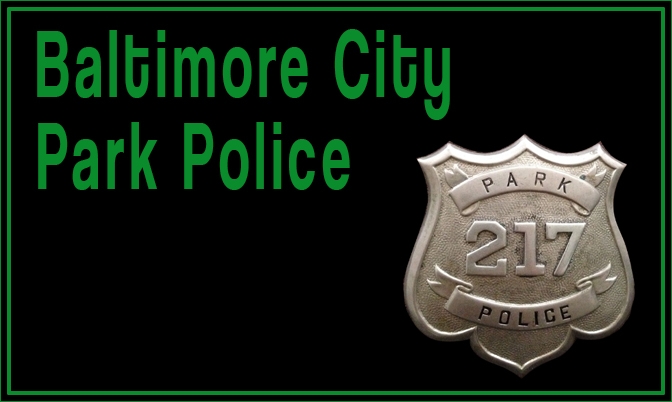
Baltimore City Park Police
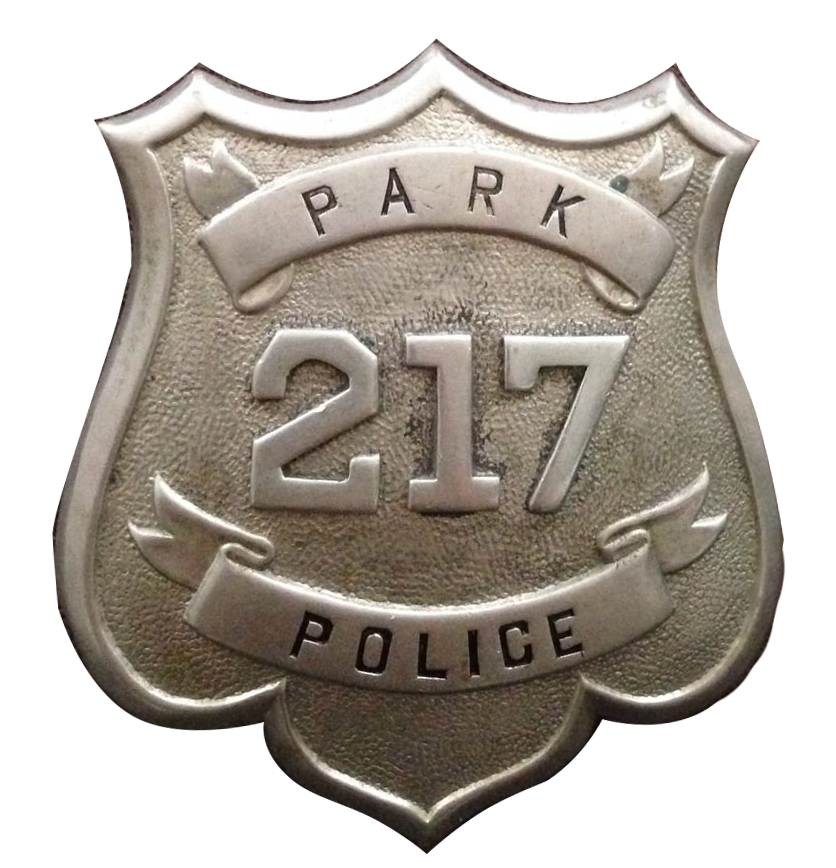
Baltimore Park Police Badge
Courtesy Patricia Driscoll
The merger of the Baltimore City Police and the Park Police was indeed finalized in 1961.
The specific legislation extending the authority of the Baltimore City Police to include parklands was enacted on March 10, 1961. This merger allowed the city police to absorb the Park Police, ensuring that their authority covered the parks as well.
City Police Power to Include Parks
10 March 1961
City Police Power to Include Parks
ANNAPOLIS nine marks – the Senate today enacted a Bill extending the authority of Baltimore city police put into the counties said they may police parkland.
Introduced by delicate Marvin Mandel Democrat this Baltimore the measure provides that the authority of the city’s police Commissioner Shelby concurred with local police.
Recently, the city force absorbed the Park police and the bill extends its authority into the parks. Meanwhile, Senate President George W Della Democrat six Baltimore introduced the Bill protecting the pension and promotion rights gained by members of the Park police before the merger.
THE PARK ASSAULT CASE
Reported for the Baltimore Sun
The Sun (1837-1987); May 27, 1887;
pg. 5
THE PARK ASSAULT CASE
confession of the prisoner and establishment of his identity
the color man who had said his name was Thomas Henry, and is accused of a felonious assault on Mrs. Mary J. Ridley, of West Woodbury, and George Hill Park, Tuesday morning, confessed to Marshal Jacob fray yesterday afternoon 26 may 1887 at police headquarters in Baltimore city in the presence of deputy Marshal Lannan Capt. Freeburger and detective Pumphrey that he assaulted the lady claiming however, to attacked her only for money, having seen a person or hand.
Marshall Fray was much interested in the case is eight of his policeman are detailed for duty in the park. After visiting the scene of the assault on Tuesday and conferring with Capt. could sell, he determined to his utmost to get to the bottom of the facts. Accordingly, he sent detective Pumphrey to Towsontown on Wednesday to have a talk with a colored mAn who was held in the jail there, and if possible gain from him any details that might be of use in ferreting out the prisoner’s history and movements. The detective did not have much luck so the Marshal resolved to try his hand. In company with Detective Pumphrey he drove to Towsontown yesterday morning and had a conference with states attorney Burke. The Marshal told Mr. Burke that he was very anxious to learn for himself if the colored man was the assailant of the lady, but felt he was somewhat handicapped by the remote distance between himself and the prisoner. The Marshal thought if he had the man in the city he would be able to learn something important. States attorney Burke said in reply that he was willing the Marshal should take Williams to Baltimore, and accordingly issued orders to that effect to the jail officials. Detective Pumphrey came to the city on the railway cars, while the colored man and the Marshal road together in the Marshal’s carriage. On the way, the Marshal replied his companion with questions, and on York road, beyond Waverley, Williams, feeling himself cornered, said he was sick and would not talk further. The Marshal did not press him. When police headquarters were reached Williams was given a seat in the Marshal’s office, were deputy Marshal Lannan and Capt. Freeburger were also. The Marshal said he had information that Williams was a thief and ordered at once an inspection of the rogue’s gallery, where a photograph of the colored man, numbered 1105, was found. On the back was the Miranda; “George H. Williams, arrested February 20, 1877, by policeman Dietz, central district, for larceny.” On March 2, of the same year, Williams was sent to the penitentiary for four years. He had been there before and was only free a short time after serving a sentence when apprehended by policeman Dietz. The Marshal sold Williams his own photograph, whereupon he again said he was sick. Then the Marshal told him of a statement the police had regarding the assault, to which Williams listened attentively, and on its conclusion said many of the details were incorrect. He eagerly told his side of the story and was taken to a private room, where in the presence of witnesses, he made his statement, admitting the assault for robbery, but claimed no other criminal intent. His statement which was recorded by the Marshal, was subsequently as follows: “my name is George Williams, Esther saw her sitting under a tree. She had the pocketbook in her hand, I passed her and turned, I snatched the pocketbook, and she threw her hands up. I struck her in the face; the pocketbook then fell to the ground. I picked up two silver dollars and one silver quarter. I then left her, and started to go out of the park, and was arrested by police before I left the park.”
By Marshall fray – “did she offer any resistance?” Williams – “no – serve.” Marshall Fray – “how do you account for the bruises on her face?” Answer – “I did not strike her. As I snatched the pocketbook out of her hand she held her hand up and my hand slipped and struck her on the face.” Marshall Fray – “did you not intend to strike or?” Williams – “no Sir” Williams is 29 years old. He is 5 feet 6 ½ inches tall and weighs 160 pounds. His skin is very dark. There is a large scar on his left cheek beside his ear.
Mrs. Mary J. Friendly, of West Woodbury, the victim of the assault, was reported Lee in proving by her physician Dr. Daniel W. Smith. Justice Harry T. The alley had fixed on Monday next for a hearing. On Wednesday night a party of men from Woodbury went to Towsontown with the determination to take the prisoner from jail and swing them up on the nearest tree, but owing to the failure of promised aid from an organize forced to appear from Woodbury to support the party decided to wait until all doubt was removed as to the identification of the prisoner is Miss Ripley’s assailant. The feeling and Woodbury is intense, and the general impression there is that if the prisoner is identified thoroughly at the hearing at justice dailies he will never reach Towsontown. Miss Ridley’s expresses herself positively that the prisoner is the right man.
The presence of men from Woodbury in Towsontown on Wednesday night was probably known to the County authorities they are and was one of the considerations influencing Mr. Burke to give the man up to Marshall Fray so as to have him in the safe hands of the Baltimore police the prisoner was kept in a cell at the central police station last night, and today will be sent to the Baltimore city jail to await the action of the County authorities.
Capt. to sell, detectives Freeburger and Pumphrey and County policeman Chase O’Neill, Chase Bowersox and William Kennedy and some city officers spent a good portion of yesterday afternoon at the place in Druid Hill Park where the assault took place, hunting for Mrs. Wrigley’s pocketbook, which was thrown away by her assailant.
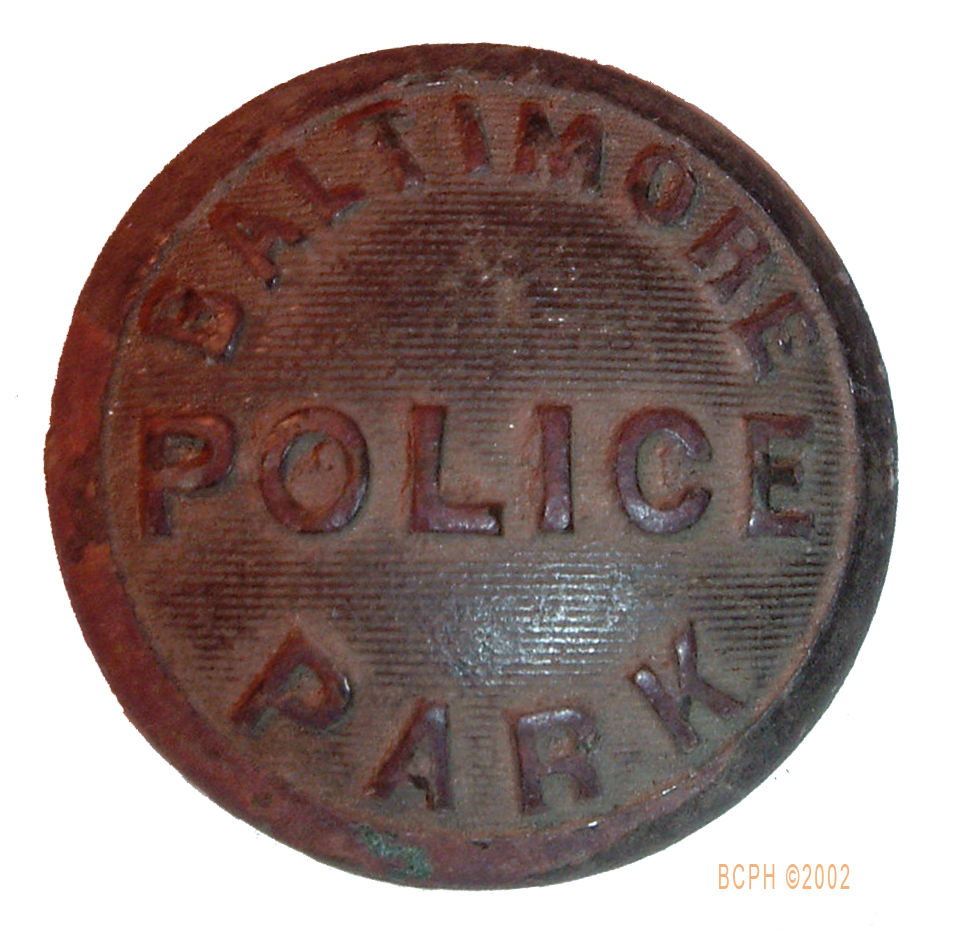
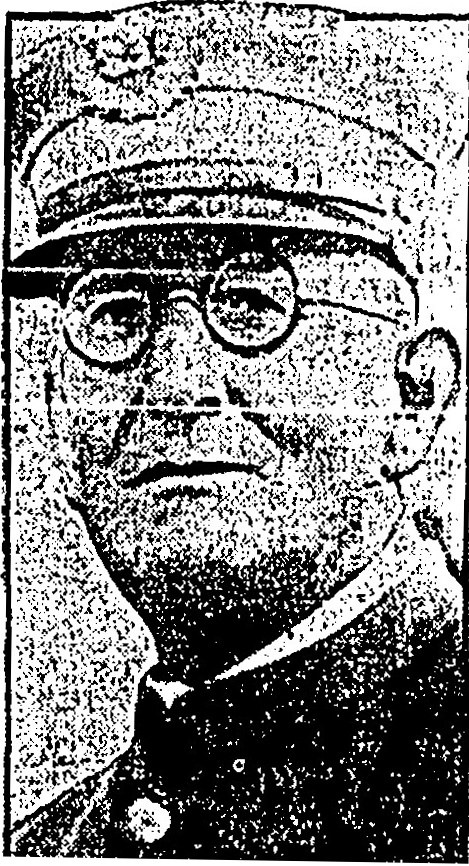
Patrolman John Harris
3 July, 1925 - Patrolman JOHN E. HARRIS - him patrolman John E Harris of Druid Hill Park police died yesterday in West Baltimore General Hospital from pneumonia which is said to have been caused by injuries received at last Monday when he was struck by an automobile operated by a student driver he was 73 years old. -At the hour of Mr. Harris’s death William Norris president of the Park board and conference with officers and members of the automobile trade Association refused to resend the boards order by which persons learning to drive automobiles would be prohibited from using roads in the public park the order was issued by Mr. Norris as a result of the accident in which officer Harris was hurt. The conference ended with the Association deciding to abide by the ruling of the board. Student driver held Harry Siegel 2366 McCulloch Street who under the tutelage of alley apple sign 6 North Bond St. was operating the machine which is said to have struck the patrolman, was released in the custody of his attorney at the Northwestern police station pending the action of Dr. J Terrell Hennessey corner Siegel was charged with causing officer Harris’s death. He had been released after the accident in the custody of his attorney. The police said Apple stain also may be arrested, but no immediate action against him has been taken. (*10)
PATROLMAN, STRUCK BY CAR IN PARK, DIES
4 July 1925
pg. 3
Patrolman struck by a car in park, DIES
student motorist held in death of John E Harris
Ban Will Not Be should be heart upon a guitar player Lifted
North after conference Declares roads will remain closed to learners
Patrolman John E. Harris, of Juneau Park police, died yesterday at the West Baltimore General Hospital from pneumonia, which is said to have been caused by injuries received last Monday when he was struck by an automobile operated by a student driver. He was 73 years old
at the hour of Mr. Harris’s death William L. Norris, president of the park board and conference with officers and members of the automobile trade Association refused to resend the boards order by which persons learning to drive automobiles would be prohibited from using roads in the public parks. The order was issued by Mr. Norris as a result of the accident in which Mr. Harris was hurt. The conference ended with the Association deciding to abide by the ruling of the board.
Student Driver Held
Harry Siegel, 2366 McCulloch Street, who under the tutelage of Eli Apple Stein, 6 North Bond St., was operating the machine which is said to have struck the patrolman, was released in the custody of his attorney at the Northwestern police station pending the action of Dr. J. Tyrell Hensley coroner. Siegel was charged with causing Mr. Harris’s death. He had been released after the accident in the custody of his attorney. The police said Apple stain who may be arrested, but no immediate action against him was contemplated.
Conference Called Helpful
Mr. Nora said his conference with the officers and members of the automobile trade Association had been “very helpful.” He asserted the automobile salesman were of the opinion that the practice of teaching novices how to drive in the parks was dangerous to pedestrians. An officer of the Association and Mr. Nora’s will tout roads adjacent to Baltimore next week in an effort to locate territory available for beginners.
The salesman contended Mr. Nora said, that the roads of Druid Hill Park had been used by student drivers because of their proximity to the automobile trade centers of the city.
![]()
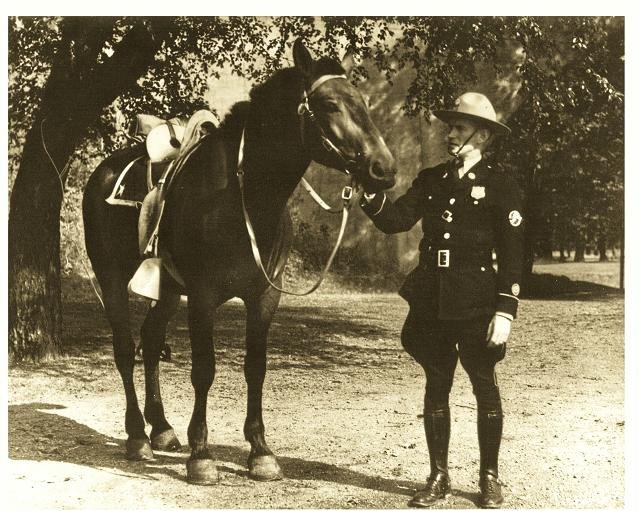
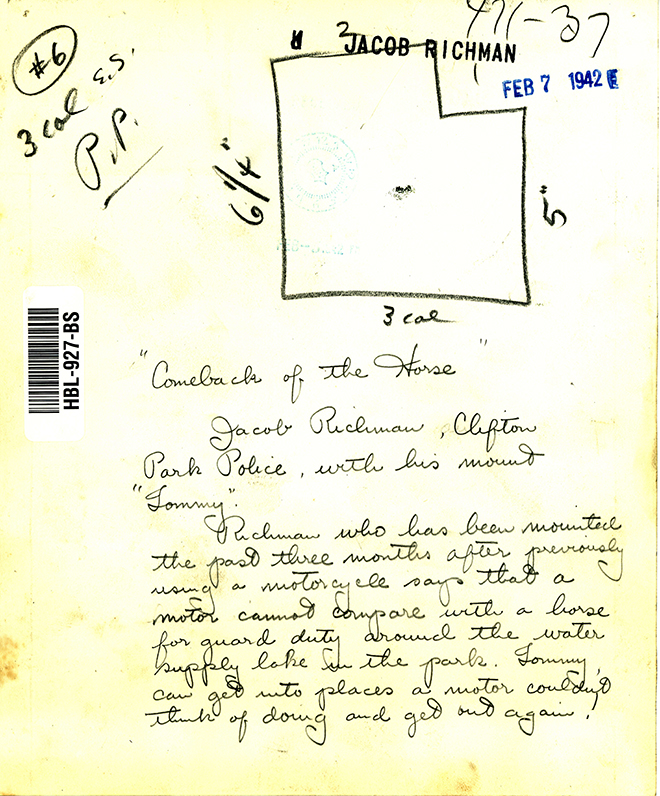
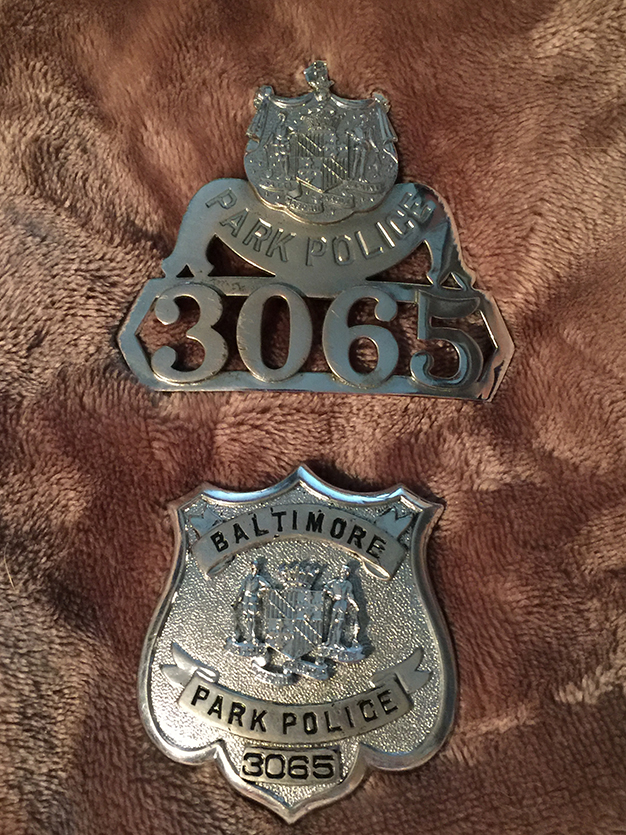
POWER IS GIVEN TO PARK POLICE
1 Aug 1956
pg. 8
Power is given to Park police McKeldin grants them law enforcement authority
Governor McKeldin has signed special commissions for 21 Baltimore Park police members granting them law – enforcement authority in three areas in Baltimore and Anne Arundel County’s.
The properties involved are Fort Smallwood Park, and Anne Arundel County and Robert E Lee Park at Lake real and grandma Memorial Park both in Baltimore County although Baltimore’s Park police currently have jurisdiction in the sections, their powers of arrest apparently have been of a “quasilegal” nature.
From City Charter
The Park police derived their authority from Baltimore city charter and are under the rule of the Park board.
Yesterday both Charles A book superintendent of the Bureau of Parks and Lieut. Millard F Livingston acting head of the police unit admitted that the authority of the Park police to operate outside Baltimore city has been periodically questioned.
Explaining his request to the governor which resulted in the authorizing commissions. Mr. Hook said “we’re just playing safe.”
Might have been “invalid”
The superintendent also admitted that if a defendant who had been arrested by Park police in one of these areas had challenged the arresting authority of the officers the courts might have ruled the arrest invalid.
The new authority from governor McKeldin appointing the 21 officers as “special policeman for the state of Maryland” in three recreational zones should end any such controversy. Mr. Hook said
![]()
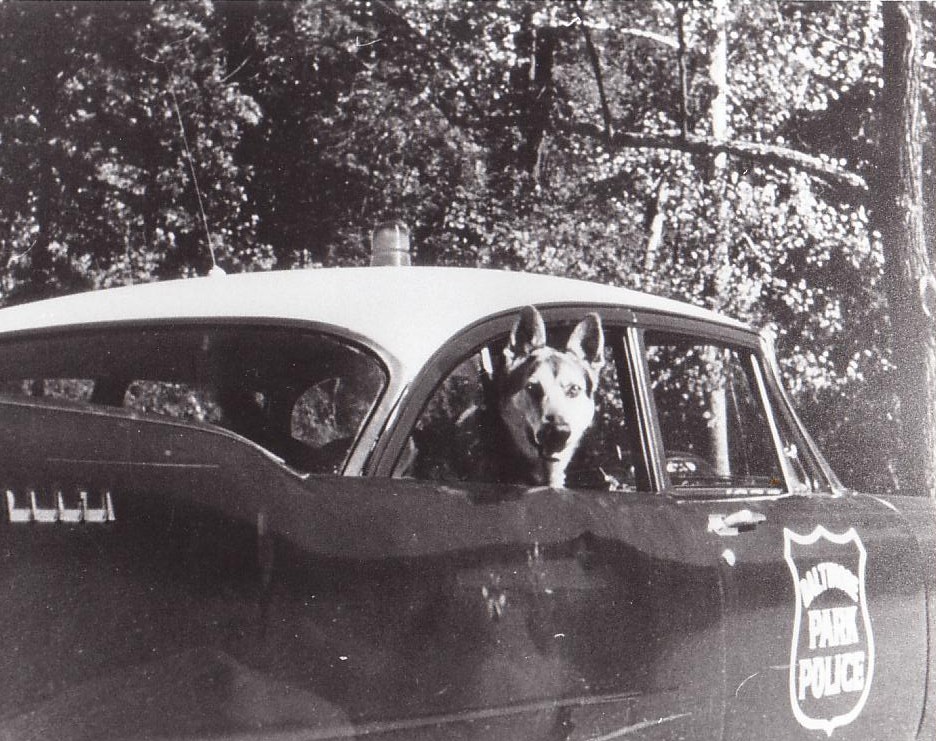
The Park Police
15 May 1956
pg. 14
The Park Police
when the Baltimore Park police make news as they are currently doing, it comes as a surprise to most people to learn that they are not a branch of the city Police Department, but an autonomous body, owing allegiance to the Park board and the Mayor, and not the police Commissioner. In practice, they work very closely with the regular police, use the police radio service, request help from the police Commissioner for special assignments and divide with the police department with jurisdictions over the islands of park property here and there in the city.
Technically, they control the policing of the stripes of grass in Eutaw place, the railings around the battle monument in the fountains in Mount Vernon Pl. In practice they patrol Mount Vernon Pl. only between midnight and 8 AM the city police on the other hand, do not enter the parks unless they are in hot pursuit or are invited to do so by the Park police on such occasions as a big game at the stadium or when there are very large holiday crowds in the parks.
The city budget allows for 118 officers and men on the park force. Whose Capt., as head of a separate department, is paid a little more and other police captains. The rookie cops are paid less than the regular entrance to the police force: $3500 a year against 4000 for a third-grade city patrolman.
The origins of the force date back to the beginning of this century when the police commissioners declined to police the parks because he said his force was not sufficient, and a city law and powered the Park board to recruit its own law enforcement officers, who also acted as Park caretakers, a role that is now been separated from police duties.
From time to time, it has been suggested that the Park police should be united with the regular police force. An effort in 1949, made on the recommendations of the Mayor’s budget advisory committee, following a survey by the public administrators service, was tabled by the Park board. The survey recommended that a small Park police force merely for the protection of property should be retained, but that other functions of the Park police should be returned to the police department. This might be a useful moment for an Imperial review of the whole system of dual police control of the city, a system which on the face of it seems a little out of date.
![]()
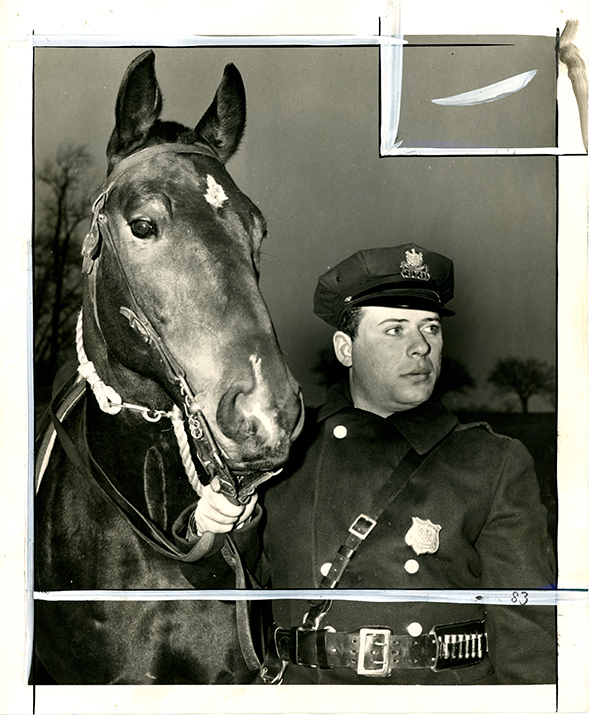
GRAND JURY ACCUSES GAENG AND O'CONNOR IN PROBE OF PARK POLICE
25 May 1956
pg. 52
GRAND JURY ACCUSES GAENG AND O’CONNOR IN PROBE OF PARK
POLICE
Conspiracy, malfeasance, and obstruction of justice laid to chief and Sgt. Savard also presented
Capt. G. Gordon Gaeng, chief of Baltimore Park police, and Sgt. Kenneth of the O’Connor yesterday were accused by the grand jury of conspiracy, malfeasance, and obstruction of justice.
The accusations against the two officers of the park force resulted from a probe into the matter in which Capt. Gaeng and Sgt. O’Connor investigated a woman’s complaint that she was molested by a park patrolman.
The grand jury also returned an accusing him of assaulting Mrs. Anna Mae Nichols, Negro, mother of two children, last August 29 and Gwen falls Park.
Officials of the park presentment against patrolman George A Savard, accusing him of assaulting Miss Anna Mae Nichols, Negro, mother of two children, last August 29 and Gwen falls Park.
Officials of the city’s Park board announced late yesterday that Lieut. Millard Livingston would be in command of the park police force pending the outcome of criminal charges
Released On Bail
Both Capt. Gaeng and Sgt. O’Connor were released on $1000 bail each late yesterday. The bond was posted by Maurice Berman, professional bondsman, with a Scherr, deputy clerk of the criminal court.
Charles A. Hook, superintendent of Parks announced later that both police officers will be suspended from duty as soon as he is formally notified of the charges.
Soured, already under suspension, is at liberty in $500 bail, posted last week in Northwestern police court after a warrant charging him with assault was obtained by Mrs. Nichols
Anselm Sodaro states attorney, who had assisted the grand jury in the probe along with Jay Robert Brown. Announced that he has ordered a dismissal of the police court charge against soured, in view of the grand jury’s action.
Held a Lineup
Seven weeks after Ms. Nichols lodged her complaint with the Park police last August, Capt. Gaeng conducted a lineup from which the number one suspect was excluded, it was revealed last week. The captain explained his failure to place the suspected policeman in the phony line up by saying that he believed Miss Nichols may have been trying to “finger” one of his men.
Ms. Nichols viewed a second line up in Baltimore police headquarters last week and Savard it was charged a few hours later.
Sgt. O’Connor’s and Savard are said to be related to each other.
The three present mints against of the two police officers contain for specific allegations of failure to perform their duty.
They are:
1 failing and neglecting to promptly charge severed with making an assault upon Ms. Nichols and conduct of police lineup of persons suspected of the assault
2 failing and neglecting to play severed in the line-up although he was the principal suspect at the time.
3 failing and neglecting to report to and appoint the Baltimore city Police Department with the facts that “a crime had been committed” by Savard and
4 failing to properly conduct and complete investigation of the charges against the Savard
Conspiracy Charge
the three resentments accused the captain and Sgt. of conspiracy together preventing charges of assault against Savard by means of the four allocated acts of omission, of attempting to obstruct justice in that manner and a willfully neglecting to perform their duty by the same for means.
Mr. Spadaro said indictments will be prepared promptly, and the cases will be set for arraignment in criminal court.
The pigeonholed complaint of Mrs. Nichols came to light recently when two patrolmen of the park force Baird the inaction of their superiors.
Mr.’s narrow promptly took up the inquiry, question more than 20 witnesses and finally laid the entire matter before the grand jury.
During his probe, the state attorney blocked any attempts by Capt. Gaines to conduct a second line-up of his own Park headquarters of the department
![]()
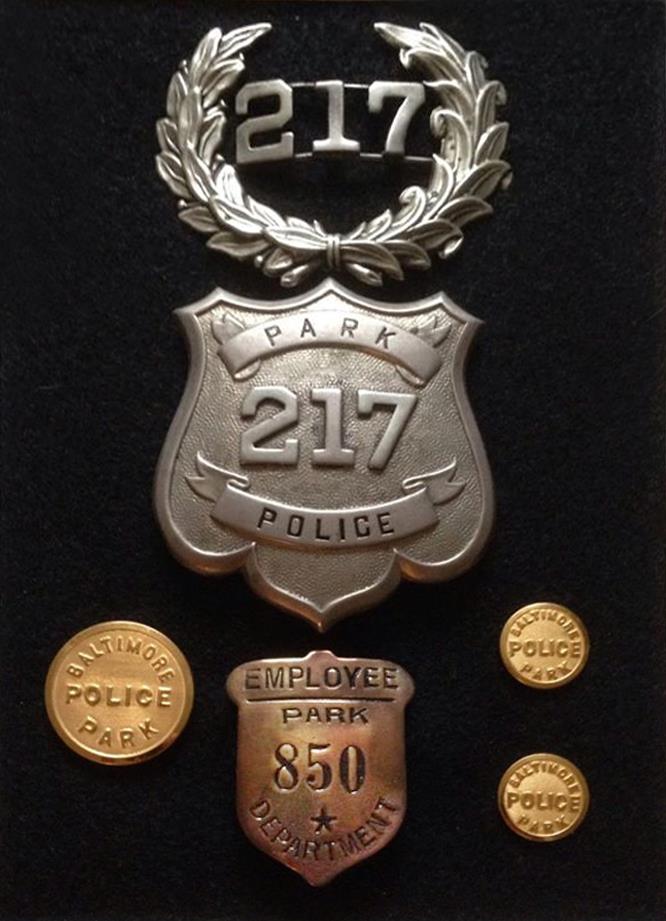
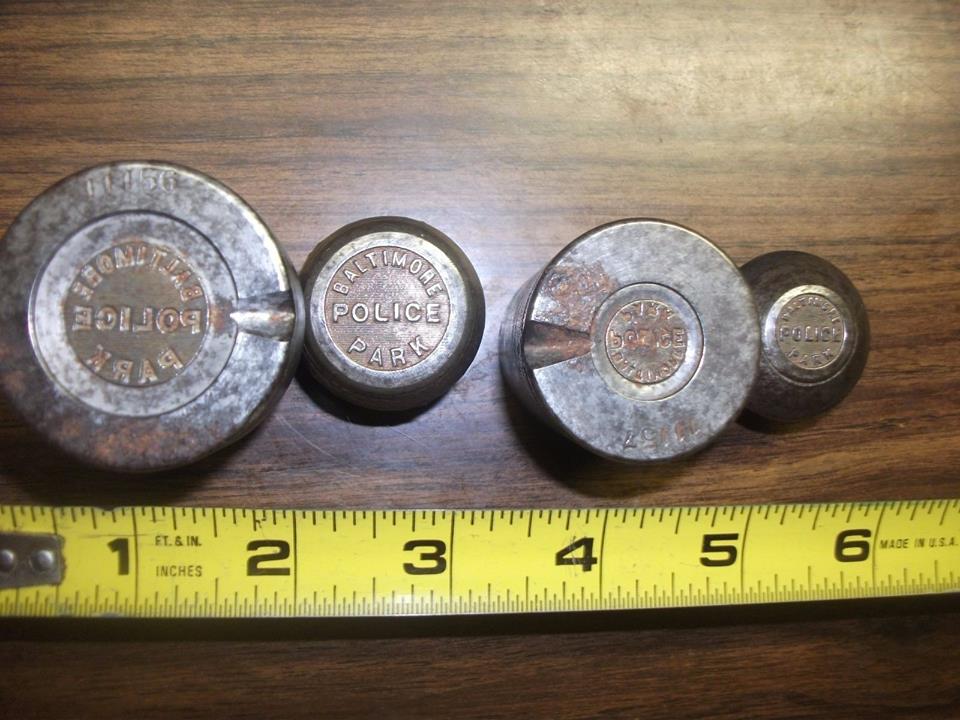
MAYOR TAKES NO STAND ON POLICE PLAN
15 Aug 1958
pg. 40
Mayor takes no stand on police plan
Declined to come out for or against city of merger idea
Mayor D’Alesandro refuse yesterday to take an outright stand for or against a merger of the Park police with the Baltimore city Police Department.
The mayor would say only that “the Baltimore city charter vest all power concerning the Park police in the Park board”
during the most recent previous controversy over a possible merger of the two forces the Park Board opposed such a move.
Leon Abramson, president of the city Council, said that at least for the present, he opposed any merger
Stands by report
the “assistant mayor” said he still stood by a 1957 report of the councils the judiciary committee which did not approve a resolution requesting a study of a need for merger.
The latest calls for elimination of the Park police as a separate force followed the murder of a 57-year-old woman whose body was found on the Clifton Park golf course early August 5
governor McKeldin, on returning from abroad earlier this week, said he favored a merger. But that his opinion was not based on the Clifton Park crime.
Matter of jurisdiction
the difference in attitude between the city and state officials underlines the fact that the merger argument is partly a matter of city versus state jurisdiction.
The Baltimore Police Department is under administrative control of the state. It’s Commissioner is appointed by the governor.
But the Park police is not connected with the Police Department, although the two forces cooperate closely. The Park police owes its allegiance to the Park board and the mayor, not to the police Commissioner. Mr. Abramson said a merger “is not as easy as it sounds. It requires action by the legislator as well as charter amendments”
![]()
ENDING OF PARK POLICE SOUGHT
28 June 1959
Ending of Park Police Sought
Rubenstein would merge city departments
City Councilman Leon Rubenstein Democrat fifth district will sponsor a resolution tomorrow urging absorption of the Park police by Baltimore’s regular Police Department.
Although the Council is scheduled to recess for the summer after tomorrow’s meeting Mr. Rubenstein is hoping his measure can be the subject of hearings during the summer months.
Sure of Recommendation
He will ask that it be referred to the parks and recreation committee and that the committee consider the measurement carefully before the Council returns in the fall.
Although Mr. Rubenstein favors ending the separate Park police force, his resolution asked the mayor to appoint a commission to study the practicality of MERGER and Park police into the regular Police Department.
The Council and said he convinced that any independent commission will recommend such a step after studying the situation.
He recommends prompt action, declaring it favorable commission report would then necessitate the legislative action to enlarge the Police Department and also a special referendum in 1960 would be required to amended the city charter.
Transfer in Grade
Mr. Rubenstein would transfer all present Park police to regular force with no loss in grade, rank, seniority and pension rights.
According to Mr. Rubenstein the city’s Park commission was first granted the right to preserve peace in parklands by the city charter of 1862 the purpose of the power was to police of the new Druid Hill Park, which at the time was wholly beyond the city limits and thus beyond the authority of city police he said.
Says Reason is Gone
the city not only absorbed Druid Hill Park but grew to have many other parks – all the while continuing the system of separate Park police force, the councilman said in a prepared statement.
He contends the reason for the separate Park police force no longer exists.
Mr. Rubenstein arguing for an end to the separate Park force, says:
1. A single police system will be more efficient
2. Economies will be possible
3. “Duplicity of command” will be avoided.
4. Better distribution of policing throughout the city will be possible.
![]()
Tawes Approves Merger Of Park Police, City Force
31 March 1960
Tawes Approves Merger Of Park Police, City Force
Governor Tawes has “given his blessing” to the proposed merger of the Park police with the Baltimore police force, city officials said yesterday.
Dr. Frank C Marino, president of the Park board, reports that development after he and other officials conferred with the governor at his Baltimore office.
The governor has agreed to take administrative steps that city legal aids have said are necessary in order to bring about the merger. Dr. Marino said
Hepbron at Meeting
he reported that James M Hepbron, police Commissioner who was also present at the meeting, has agreed to assign one of his inspectors to survey the Park police force and arrange for its integration into the city’s police department.
The inspector will spend part of his time with the Park police to determine which duties each man is best suited for and to discover which members need further training.
Dr. Marino said Governor Tawes is “with us 100%” on the city plan to merge the two police forces by January 1.
Agreement by the governor is necessary for several reasons, according to an opinion by Harrison L. Winter. City solicitor.
Police Strength Up
since the city police, which operates under the jurisdiction of the state government, are very near their us authorized strength, the written consent of both Governor Tawes and Mayor Grady must be obtained to bring the park officers in.
Mr. winter also discovered that the Park police derive their authority in Park property outside the city through special commissions given them by the governor. Similar commissions would have to be given to some city policeman so they could patrol those parks.
City officials will confer shortly with officials of Baltimore and Anne Arundel County’s to obtain their consent to use the city police to patrol city parks in their territories. Dr. Marino added.
He repeated his determination to merge the 126 man Park police force, which has been an arm of the Park board, with the city department by January 1. That date was selected because it is the beginning of the next city fiscal year
in Outlining the administrative steps that he said could accomplish the merger, Mr. Winter recommended that the city seek legislation in the Gen. assembly next year confirming the actions taken.
![]()
January 1 Is Ruled O.K. As Date Of Police Merger
JAMES S KEAT
3 Mar 1960
January 1 Is Ruled O.K. As Date Of Police Merger
Merger of Park police into the Baltimore Police Department can be accomplished next January 1, the city solicitor ruled yesterday.
Dispelled widely held assumptions that the merger might take a year or two, the city chief law officers said no state or city legislation must be passed before affecting it.
Harrison L Winter city solicitor, and Morton Al Goldner, assistant, recommended the January 1 date primarily because it is the beginning of the next city fiscal year.
Legislation Do
Several items of legislation, including an amendment to the city charter, are proposed to be made later. But the law officers said the merger could go ahead before passage of the legislation.
Merger of Park police into city force has been talked about for many years. The proposal gathered new force last fall when Mayor Grady and Dr. Frank C Marino president of the Park board, endorsed it.
After reading the decision, Dr. Marino seconded the recommendations.
Park Board Has Voted
“For the best interest of the city and the men of two departments, the quicker it’s done the better.” He said, “I would like to have it all done by the first of the year.”
The Park board has already voted in favor of the merger. James M Hepbron, police Commissioner, said last fall that he favored the move, after seeming reluctant about it when it was previously proposed to several years ago.
A resolution calling for a commission to study legislation necessary for the merger and a proposed charter amendment to accomplish it have been pending in the city Council since last fall.
Mr. Winter and his associates have been studying this since the law relating to the Park police. A force independent of the city department and responsible only to the Park board.
Their recommendations were forwarded yesterday to Dr. Marino.
Several important administrative steps will have to be taken before January 1 to accomplish the merger, Mr. Winter reported.
They include obtaining a written consent of the Mayor and of governor Tawes to the inclusion of Park policeman in the city department pending action by the state legislature increasing the city forces authorized strength.
Since it appears that Park policeman exercise their authority and parks outside the city limits by means of special commissions from the governor, Mr. Winter said, similar authority should be obtained for some city policeman.
He said an amendment to the charter should be submitted immediately to the Council for passage in time for ratification in the general election next November simply as a matter of “good legal housekeeping.”
Suggestion Made
legislation should be prepared for submission to the Gen. assembly next year, confirming the transfer of Park policeman to the city department and granting the police Commissioner concurrent authority over city parks in the counties. Mr. winter said.
“In this connection, it would seem to us to be highly desirable to consult with the legislative representatives of neighboring subdivisions in which Park property is located to reach an agreement” in advance on an acceptable amendment to the state law limiting the city departments authority to Baltimore’s borders, he added.
Taking the legal problems one by one, Mr. winter found that none of the necessarily an obstacle to swift action on the merger.
“Concurrent Jurisdiction”
although the charter “might at first blush same” to give soul policing authority in the parks to the Park board, he said the Police Department is granted “concurrent jurisdiction” over parkland within the city.
He said a court of appeals the ruling in 1902 and administrative practice at least since 1947 “has been for the city police to exercise authority within the parks their respective of a request from your department to do so.”
An amendment to the charter confirming the charge would be “desirable from the standpoint of good legal housekeeping.” Mr. winter said. But is “unnecessary as a condition proceeded to affecting the contemplated merger.”
The authorized strength of the Police Department is fixed by Gen. assembly, Mr. winter continued. But the state law also provides that the police Commissioner can exceed that number with the written approval of the governor and mayor he said.
Since some city parkland, like Fort Smallwood, is located outside its borders, the city police will need authority to take over the duties of Park policeman in those areas.
“The Basic Question”
“The basic question of the authority of Park police to act as conservatories of the peace has never been conclusively resolved, and our and quarries have this closed that Park police act as conservatories of the peace in park areas outside the city by virtue of commissions issued by the governor as special police, rather than by virtue of their being Park police.” Mr. Winter said
![]()
City Stays On Fringe Of Big News In 1960
CHARLES V FLOWERS
1 Jan 1961
pg. 14 City Stays On Fringe Of Big News In 1960
Though generally on the tinges of big news, except in sports, Baltimore made the national impact in 1960 by beating the biggest bunch of people in Texas.
Preliminarily senses figures showed that Houston Edges Baltimore as the country’s six largest city. Hordes of the uncounted became accounted for later in the year though and Baltimore maintained its position by a margin of 805 people 939,024 people to Houston’s 938,219
Something to ponder Texans being the way they are used it is something to think about for 1970
But back to the fringes; it is a sad obligation to report in 8 years and story that in a surprising to defeat the regal Colts were shoved to the outskirts of the professional football court
Young Orioles provided some consolation, rising Phoenix like from sixth place in the American League in 1959 to 2nd place in 1960 a walloping outfielder could mean the pennant this year baseball buffs believe crime in Baltimore rocketed along about as always – quite a bit of it, but nothing spectacular. The 111 murders surpassed the totals of the previous four years, but police made arrests and all but two of the killings.
A federal grand jury indicted Melvin D. Reese Junior, 31 of Hyattsville a musician in the kidnapping murder of Mrs. Carol the Jackson Junior 27 and her five-year-old daughter Susan and in shallow grave the Jackson’s, of Apple Grove Virginia were found in March 1959 in a shallow grave in the Gambrill section of Anne Arundel County federal agents arrested Reese a West Memphis, arc, in June and brought him here for indictment. Virginia officials also charge Reese with murdering Mr. Jackson 29 and other Jackson daughter Janet 18 months.
In addition Anne Arundel officials charge Reese with the 1957 murder of Mrs. Margaret Harold she was killed in the Gambrill section while parked with a soldier.
Reese had not come to trial because of pretrial motions.
In a not quite murder, it Puerto Rican tavern operator who formerly danced on the block was not quite convicted.
Judge James K Cullen gave Miss Marino raise 30 probation before verdict on charges of attempting to commit murder, conspiring to commit murder and trying to hire an undercover detective to kill a disc jockey who had gone back to his wife.
The purported victim was Ray Davis, of Glen Burnie. But the loser was Mrs. Davis. She was fined $50 may six after finding her husband and threatening him with a pistol. She said he had not been home for days. Fraudulent claims for welfare payment constituted the longer continual court action of the year in Baltimore. More than 250 persons were indicted during the year. Payments on the fraudulent claims amounted to about $200,000.
Most of those convicted were women who maintained they were without support because their husband had deserted them, though it was proved that they were being supported by other men.
One such mother of nine was sentenced to four years imprisonment. Welfare officials noticed a decline in the number of other applicants.
Inmates of Marilyn penal institutions grew reckless in August and about 1600 of them went on strike.
Inside workers complained that they should have the same sentence reduction benefits the prisoners working outside were getting. A new Board of corrections ruled allowing prisoners working outside five days a month to deduct the five days from their sentence on August 8 see Fernando Sievert Atty. Gen. ruled that no prisoners could have the five-day deduction. The inmates dude and rattled their cell bars but ended the strike.
As has been the custom for three years previously, Blue Cross and Blue Shield rates went up in 1960 the Blue Cross increase effective October 1 average 17.9% the Blue Shield rates rose by as much as 33.4%.
Besides reestablishing Baltimore in sixth place among the nation cities, the 1960 census gave Marilyn another state in the house of representatives.
The new congressional district will be the eighth, and its representative will be elected in 1962 politician said last month that the A’s should be carved from the populous fifth, which covers southern Maryland.
All three of Baltimore’s Congressman – all Democrat – one again in the November 8 election.
Baltimore gave Sen. John F. Kennedy and 88,000 majority over vice Pres. Nixon for the presidency and the state also gave a majority to Kennedy.
The state electoral vote to establish an 11th judge municipal court in Baltimore, replacing the police and traffic court system. State voters also expanded the court of appeals by two judges. In the city, judges J Gilbert Pendergrass and Delaney Forster were returned to the supreme bench and judges Harry L Rogers and William T Tippit Junior to people’s court.
School Plans Okayed
Voters also approved a $22 million school construction bond issued to approve merging Park police with city police. They rejected several bond issues including one for $4 million for the expansion of the cramped Walters Art Gallery.
The city jail expanded, new wings costing $3 million were dedicated late in the fall.
Construction began on the $3 million mercy hospital at St. Paul Place and Lexington Street and workers completed the steel frame for the 20 story for under bed structure.
The Civic Center had trouble with its plans, but it also made firm progress. Workers began clearing the 5-acre site last February and finished long before the year ended.
Last spring the architect was asked to revise his design for the $12 million project to include a permanent stage suitable for Opera. He said he would have to eliminate the distinctive pleated roof for economy reasons. But later in the year, the Civic Center commission voted to restore the plates. While keeping the states.
Definite Progress
There was definite progress, also, on the adjoining Charles center, in March the urban renewal and housing commission chose Metropolitan structures Corporation of Chicago to put up the first building.
It will be a 23 story office building designed by Ludwig Miles Vander role, and will be at trolls and Lexington streets on the site of the old O’Neill’s department store. On August 4 the city brought the first property for clearance in the center, at 15 W. Lexington.
After some torturous detouring for most of the year motors finally were able in December to zip across the St. Paul Street bridge at the Pennsylvania Station the old bridge was closed last January, the new bridge costing $1.8 million was built to give greater CLARENCE over the Jones falls Expressway.
Construction on the expressway progress between the Pennsylvania Station area and Coldspring Lane causing the closing of two other bridges. The 29th St. and Cedar Avenue. The Cedar Avenue bridge closed in June and reopened in September: the 29th St. bridge closed in March and will not open until 1962
Resident Annoyed
One annoyed Baltimorean wrote to a newspaper: “with the closing of the Cedar Avenue bridge, Baltimoreans witnessed a second predawn coup which effectively sealed off Hampton and lower North Baltimore from the West approaches.”
Accompanied by a willing and noshing of teeth by nearby residents, contractors filled in Hamden reservoir for an interchange to the expressway.
Arguments continued over the route of the East – West Expressway. Someone it the “Chinese wall” pass near Chase Street others one of the expressways near the inner harbor.
A section of northern Parkway was opened. It runs westward from old Harford road through Mount Pleasant golf course to the Lynn Road. Construction on the Western and it began.
There were many changes during the year and business and financial circles.
Best on steel company announced plans in March to expand its Sparrows Point plant capacity by 10%. Already the world’s largest the plant will have an and get capacity of 9 million tons a year 18 tons a minute after the expansion, which will cost an estimated $179 million.
Last Martin Plane
The Martin company went out of the airplane business after 48 years, the longest continuous history of such manufacturing in the country. On December 20 the company completed its last plane and said it will concentrate on missiles. Electronics, nuclear energy and designs in space vehicles. The company moved to Baltimore from California 1929.
Having slipped behind Philadelphia in the amount of foreign tonnage passing through the port Baltimore regained that the number two position in the United States.
In November the Marilyn port authority said that for the first six months of 1960, Baltimore handled 11,546,000 long tons second only to New York’s 21,000,192 long tons. The authority expected Baltimore’s foreign trade to be about 7.3% higher for the year than in 1959.
Toward the end of the year the thriving Chesapeake and Ohio railway claimed 55% of the stock of the ounce pound Baltimore and Ohio Railroad. The Chelsea, smaller but sounder than the BNO, said it was extending its stock exchange offers to February 2 and expected to pick up 10% more.
Merger Lists
Fidelity – Baltimore national bank and Marilyn trust company merged into the Baltimore national bank. Maryland’s largest and among other mergers the Brunswick Corporation acquired the Ones yacht company.
It will not hurt until this year but last month the city Council imposed several new taxes to meet Baltimore’s $292,301,000 budget the budget is $38,666,000 higher than in 1960 the Council raise the tax on commercial users of gas and electric from 8 to 9% established a 3% residential phone use tax, and imposed a recordation Levy of a dollar 10 for each $500 valuation and an annual fee of $15 for dairy farm supplying the city. The property tax remained at $3.60 for each hundred dollar valuation.
The schools were plagued with one more problem than has been customary in recent years. In October William J Murray third dropped out of the ninth grade at Wilburn Junior high school. He said he was an atheist and objected to having to listen to Bible readings and the Lord’s prayer in opening exercises rulings made the state department of education ruled November 2 that Bible readings is constitutional but pupils who object may be excused. The city school board made a similar ruling in the month. By last month only six pupils had asked to be excused, though Miss Madeleine E Murray, mother of William, filed a suit in Superior Court asking for elimination of segregation opening exercises from public schools.
Jewish leaders asked in December that Hanukkah observances be eliminated from public schools.
Dr. George Beebe brain, who succeeded Dr. John H Fisher as a school superintendent last January, issued no formal orders on the Jewish request but left it up to school principals.
Except the hurricane Donna in September, whether has generally been unspectacular. The hurricane will Ocean City Maryland leaving a number of resort structures roofless. Being only on the fringes this time, was a good thing for Baltimore. Which was flooded in some sections by 5 inches of rain.
On December 11 and December 12 a total of 14.1 inches of snow fell to set a record for a 24 hour. Messy and stubborn remnants of the snowfall linger yet
For persons who are meant much to the city died during the year.
Robert R O’Connor 63 died March 4 he had been state's attorney for Baltimore for three terms, Atty. Gen., governor for two terms and United States Sen. for six years.
On August 31 Howard Jackson died. He had been mayor for four terms, longer than anyone else he was 83 years old.
Philip B Perlman 70 died July 31 he was a former solicitor Gen. of the United States. He had helped write the Democratic platform at the Los Angeles convention shortly before his death.
The most Rev. Jerome D Sebastian, auxiliary Bishop of Baltimore, died October 11 he was 64 years old. For years he had also been perished priest of St. Elizabeth church in East Baltimore
MAYOR TAKES NO STAND ON POLICE PLAN
15 Aug 1958
pg. 40
Mayor takes no stand on police plan
Declined to come out for or against city of merger idea
Mayor D’Alesandro refuse yesterday to take an outright stand for or against a merger of the Park police with the Baltimore city Police Department.
The mayor would say only that “the Baltimore city charter vest all power concerning the Park police in the Park board”
during the most recent previous controversy over a possible merger of the two forces the Park Board opposed such a move.
Leon Abramson, president of the city Council, said that at least for the present, he opposed any merger
Stands by report
the “assistant mayor” said he still stood by a 1957 report of the councils the judiciary committee which did not approve a resolution requesting a study of a need for merger.
The latest calls for elimination of the Park police as a separate force followed the murder of a 57-year-old woman whose body was found on the Clifton Park golf course early August 5
governor McKeldin, on returning from abroad earlier this week, said he favored a merger. But that his opinion was not based on the Clifton Park crime.
Matter of jurisdiction
the difference in attitude between the city and state officials underlines the fact that the merger argument is partly a matter of city versus state jurisdiction.
The Baltimore Police Department is under administrative control of the state. It’s Commissioner is appointed by the governor.
But the Park police is not connected with the Police Department, although the two forces cooperate closely. The Park police owes its allegiance to the Park board and the mayor, not to the police Commissioner. Mr. Abramson said a merger “is not as easy as it sounds. It requires action by the legislator as well as charter amendments”
![]()
ENDING OF PARK POLICE SOUGHT
28 June 1959
pg. 40
Ending of Park Police Sought
Rubenstein would merge city departments
City Councilman Leon Rubenstein Democrat fifth district will sponsor a resolution tomorrow urging absorption of the Park police by Baltimore’s regular Police Department.
Although the Council is scheduled to recess for the summer after tomorrow’s meeting Mr. Rubenstein is hoping his measure can be the subject of hearings during the summer months.
Sure of Recommendation
He will ask that it be referred to the parks and recreation committee and that the committee consider the measurement carefully before the Council returns in the fall.
Although Mr. Rubenstein favors ending the separate Park police force, his resolution asked the mayor to appoint a commission to study the practicality of MERGER and Park police into the regular Police Department.
The Council and said he convinced that any independent commission will recommend such a step after studying the situation.
He recommends prompt action, declaring it favorable commission report would then necessitate the legislative action to enlarge the Police Department and also a special referendum in 1960 would be required to amended the city charter.
Transfer in Grade
Mr. Rubenstein would transfer all present Park police to regular force with no loss in grade, rank, seniority and pension rights.
According to Mr. Rubenstein the city’s Park commission was first granted the right to preserve peace in parklands by the city charter of 1862 the purpose of the power was to police of the new Druid Hill Park, which at the time was wholly beyond the city limits and thus beyond the authority of city police he said.
Says Reason is Gone
the city not only absorbed Druid Hill Park but grew to have many other parks – all the while continuing the system of separate Park police force, the councilman said in a prepared statement.
He contends the reason for the separate Park police force no longer exists.
Mr. Rubenstein arguing for an end to the separate Park force, says:
1. A single police system will be more efficient
2. Economies will be possible
3. “Duplicity of command” will be avoided.
4. Better distribution of policing throughout the city will be possible.
![]()
Tawes Approves Merger Of Park Police, City Force
31 Mar 1960
pg. 36
Tawes Approves Merger Of Park Police, City Force
Governor Tawes has “given his blessing” to the proposed merger of the Park police with the Baltimore police force, city officials said yesterday.
Dr. Frank C Marino, president of the Park board, reports that development after he and other officials conferred with the governor at his Baltimore office.
The governor has agreed to take administrative steps that city legal aids have said are necessary in order to bring about the merger. Dr. Marino said
Hepbron at Meeting
he reported that James M Hepbron, police Commissioner who was also present at the meeting, has agreed to assign one of his inspectors to survey the Park police force and arrange for its integration into the city’s police department.
The inspector will spend part of his time with the Park police to determine which duties each man is best suited for and to discover which members need further training.
Dr. Marino said Governor Tawes is “with us 100%” on the city plan to merge the two police forces by January 1.
Agreement by the governor is necessary for several reasons, according to an opinion by Harrison L. Winter. City solicitor.
Police Strength Up
since the city police, which operates under the jurisdiction of the state government, are very near their us authorized strength, the written consent of both Governor Tawes and Mayor Grady must be obtained to bring the park officers in.
Mr. winter also discovered that the Park police derive their authority in Park property outside the city through special commissions given them by the governor. Similar commissions would have to be given to some city policeman so they could patrol those parks.
City officials will confer shortly with officials of Baltimore and Anne Arundel County’s to obtain their consent to use the city police to patrol city parks in their territories. Dr. Marino added.
He repeated his determination to merge the 126 man Park police force, which has been an arm of the Park board, with the city department by January 1. That date was selected because it is the beginning of the next city fiscal year
in Outlining the administrative steps that he said could accomplish the merger, Mr. Winter recommended that the city seek legislation in the Gen. assembly next year confirming the actions taken.
![]()
POLICE INFORMATION
If you have copies of: your Baltimore Police Department Class Photo, Pictures of our Officers, Vehicles, Equipment, Newspaper Articles relating to our department and or officers, Old Departmental Newsletters, Lookouts, Wanted Posters, and or Brochures. Information on Deceased Officers and anything that may help Preserve the History and Proud Traditions of this agency. Please contact Retired Detective Kenny Driscoll.

NOTICE
How to Dispose of Old Police Items
Please contact Det. Ret. Kenny Driscoll if you have any pictures of you or your family members and wish them remembered here on this tribute site to Honor the fine men and women who have served with Honor and Distinction at the Baltimore Police Department. Anyone with information, photographs, memorabilia, or other "Baltimore City Police" items can contact Ret. Det. Kenny Driscoll at
Copyright © 2002 Baltimore City Police History - Ret Det Kenny Driscoll